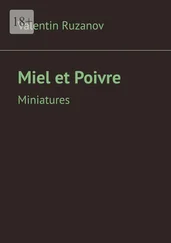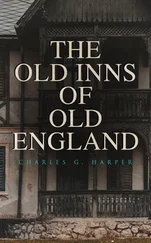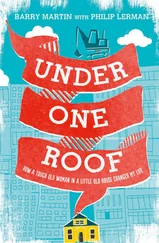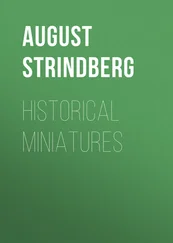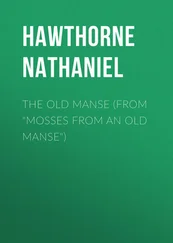Joshua Foster - Chats on Old Miniatures
Здесь есть возможность читать онлайн «Joshua Foster - Chats on Old Miniatures» — ознакомительный отрывок электронной книги совершенно бесплатно, а после прочтения отрывка купить полную версию. В некоторых случаях можно слушать аудио, скачать через торрент в формате fb2 и присутствует краткое содержание. Жанр: foreign_antique, foreign_prose, на английском языке. Описание произведения, (предисловие) а так же отзывы посетителей доступны на портале библиотеки ЛибКат.
- Название:Chats on Old Miniatures
- Автор:
- Жанр:
- Год:неизвестен
- ISBN:нет данных
- Рейтинг книги:3 / 5. Голосов: 1
-
Избранное:Добавить в избранное
- Отзывы:
-
Ваша оценка:
- 60
- 1
- 2
- 3
- 4
- 5
Chats on Old Miniatures: краткое содержание, описание и аннотация
Предлагаем к чтению аннотацию, описание, краткое содержание или предисловие (зависит от того, что написал сам автор книги «Chats on Old Miniatures»). Если вы не нашли необходимую информацию о книге — напишите в комментариях, мы постараемся отыскать её.
Chats on Old Miniatures — читать онлайн ознакомительный отрывок
Ниже представлен текст книги, разбитый по страницам. Система сохранения места последней прочитанной страницы, позволяет с удобством читать онлайн бесплатно книгу «Chats on Old Miniatures», без необходимости каждый раз заново искать на чём Вы остановились. Поставьте закладку, и сможете в любой момент перейти на страницу, на которой закончили чтение.
Интервал:
Закладка:
J. J. Foster
Chats on Old Miniatures
PREFACE
Acceding to the wish of my Publishers that the following pages should be included in a certain well-known series, I have termed them "Chats on Old Miniatures," but confess that I consider the title somewhat of a misnomer, inasmuch as I have been accustomed to regard "a chat" as a conversation between two or more persons interested in a given subject; whereas in this little volume it is obvious that I have done all the talking.
In the interval which has elapsed since my larger works appeared the most important event in connection with the subject of Miniatures is, in my opinion, the Exhibition of Works of Art of the Eighteenth Century at the French National Library in 1906. The concluding chapter of this book gives the impressions afforded by that extremely interesting and instructive Exhibition.
In the hope that they will be of use to the general reader, I have amplified my references to the public collections of Miniatures in this country, especially those at Hertford House and the Jones Collection, so rich in the works of Petitot.
Miss E. M. Foster has been of much service in revising the proofs and passing this work through the press.
I have only to add one word, and that relates to the illustrations. I am fortunate in being able to put before my readers so large a selection of choice examples of the art of miniature painting.
This I owe to the generosity of the owners of the originals, to whom I desire once again to express my indebtedness and thanks.
J. J. FOSTER.London,
Easter, 1908 .
CHAPTER I
ON THE COLLECTING OF MINIATURES
You would like to make a collection of old miniatures, did I hear my reader say? and you want to know the best way to set about it? Well, I can suggest one way: it is to become a millionaire, and let it be known that you are interested in miniatures, then you will find that a collection can easily be made, and not only so, but people will actually make it for you, with an alacrity, ingenuity, and industry which may surprise you. Should you further inquire what the collection would be like when made, my reply would be: that depends upon your own taste, intelligence, knowledge of art in general, and of miniature painting in particular; upon the depth of your purse – and, I had almost said, on your luck. Let me take that last-named qualification first, and illustrate what I mean by luck in relation to a collection of miniatures. Some years ago the father of the present Duke of Buccleuch took to collecting miniatures, and the agent he employed to purchase them was the late Mr. Dominic Colnaghi, into whose shop there walked one day a man who said he had some little pictures to sell that he had bought with a "job lot" of old silver and gold from a working jeweller. These "little pictures" turned out to be no less a prize than a number of miniatures formerly in the collection of Charles I., which, as we know, was dispersed at the time of the Commonwealth. In the days of the King's prosperity these had been catalogued and described by the Royal Librarian, the conscientious Dutchman Van der Doort, and these miniatures bore on their back a crown and the royal cipher, the entwined C's. Now, after all their vicissitudes, these priceless historical miniatures rest in Montagu House, Whitehall, barely a stone's throw from the window in the banqueting-hall of the palace whence their Royal one-time owner stepped forth upon the scaffold on that bitter winter morning of January 30, 1649. By the word "luck" in connection with this acquisition, I mean that they might have been taken to any one else but Dominic Colnaghi, in which case there is but little likelihood of their having formed part of the famous Buccleuch Collection.
In truth, it may be said that there is no royal road for the collection of miniatures, and especially in these days, when so many sharp eyes are on the look-out for them. If you go to the auction-room you are confronted with that iniquitous institution known as the "knock-out," which not only debars the owner from getting the full value of his property, but often prevents the would-be private purchaser from acquiring it at all.
To be a successful collector of miniatures demands that one should be conversant with their market value, which, in its turn, presupposes some knowledge of the various painters and the characteristics of their work. Here again, I make so bold as to assert, there is no royal road. Knowledge of this sort, like most other knowledge worth possessing, has to be acquired by experience, by patience, and by degrees. The various handbooks which have appeared in such plenty of late years professing to teach "How to Identify this" and "How to Collect that" are, no doubt, valuable in their way, but, in my opinion, are apt to lead the inexperienced collector to believe that the discrimination and the judgment essential to safety are more easily acquired than is likely to be the case in so difficult a pursuit.
And it is difficult, because, as no doubt the reader will often have observed for himself, it is so very frequently the case that miniatures do not bear the names of either the person whom they are intended to represent, or of the artist who drew the likeness. So that the collector who would judge of some little head, it may be, is thrown back upon the necessity of having an intimate knowledge of the technical characteristics and qualities of the work before him, which is often the sole test that he can apply and the trifling clue he has to follow. In the case of old silver there are, at any rate, the stamps to guide the connoisseur, to say nothing of other differences which I need not stop to point out. Most old china, too, is marked.
Again, as with china, and also with silver, there is the forger to beware of, and he constitutes a very real danger, even to collectors of experience, because the forgery of miniatures is brought in these days almost to the level of a fine art, and the ingenuity employed to deceive is indeed remarkable. Take by way of illustration the practice of painting miniatures upon old playing-cards – or what appear to be old playing-cards, for I am told that such things as the latter are expressly fabricated. In the days of the Stuarts miniatures were painted upon pieces of playing-cards, and when framed they were often backed up by one or two other pieces fitted in behind them. These latter pieces afford valuable opportunity for the forger's exertions. Old papier-mâché frames, from which some silhouette or comparatively worthless portrait has been taken, are employed to mislead the unwary. A copy, painted only the week before, is put into some old frame of the eighteenth century, and although costing but a few shillings (and dear at that), is offered at as many guineas to the confiding collector, who, if he falls into the trap, thinks he has got a bargain, as no doubt he would have if — if only the prize were an original, and what it professed to be.
Then the manufacture of copies of well-known examples in public collections is carried on unblushingly and upon a wholesale scale. I have had large leather cases of such things, containing tray after tray of them, offered me repeatedly, and "upon highly advantageous terms." These are the work of continental copyists, German and French. In Paris they may be found by the gross in the shops of the Rue de Rivoli and in the purlieus of the Palais Royal. And let not the collector make light of this persistent fabrication, because, remember, they are bought by somebody. The distribution of them is going on, as Americans say, "all the time." They become dispersed and crop up again under all sorts of circumstances, from all kinds of sources; they have endless fictitious origins given to them. Generally you are told that they have been in the possessor's family for untold generations, and that the grandfather of the would-be vendor refused a fabulous sum for them.
Читать дальшеИнтервал:
Закладка:
Похожие книги на «Chats on Old Miniatures»
Представляем Вашему вниманию похожие книги на «Chats on Old Miniatures» списком для выбора. Мы отобрали схожую по названию и смыслу литературу в надежде предоставить читателям больше вариантов отыскать новые, интересные, ещё непрочитанные произведения.
Обсуждение, отзывы о книге «Chats on Old Miniatures» и просто собственные мнения читателей. Оставьте ваши комментарии, напишите, что Вы думаете о произведении, его смысле или главных героях. Укажите что конкретно понравилось, а что нет, и почему Вы так считаете.



